Abstract
A study of physician assistant, nurse practitioner, and certified nurse midwifery programs was undertaken to identify and assess the effectiveness of recruitment, educational, and deployment strategies that programs use to prepare practitioners for medically underserved areas. The 51 programs studied were those having mission statements or known track records relating to this goal. A total of 170 interviews were conducted with faculty, students, graduates, and employers from 9 programs visited on-site and 42 programs surveyed by telephone. All programs had some recruitment and training activities in underserved sites. Only about half of the programs were able to submit data on their graduates' practice settings and specialties. These data suggest that older students who have backgrounds in underserved areas and clearly identified practice goals are more likely to practice in underserved areas. Programs that actively promote service to the underserved do so through publicly stated missions and recruitment and educational strategies that complement these missions. Such programs also are more likely to evaluate and document their success than programs that lack strategies.
Full text
PDF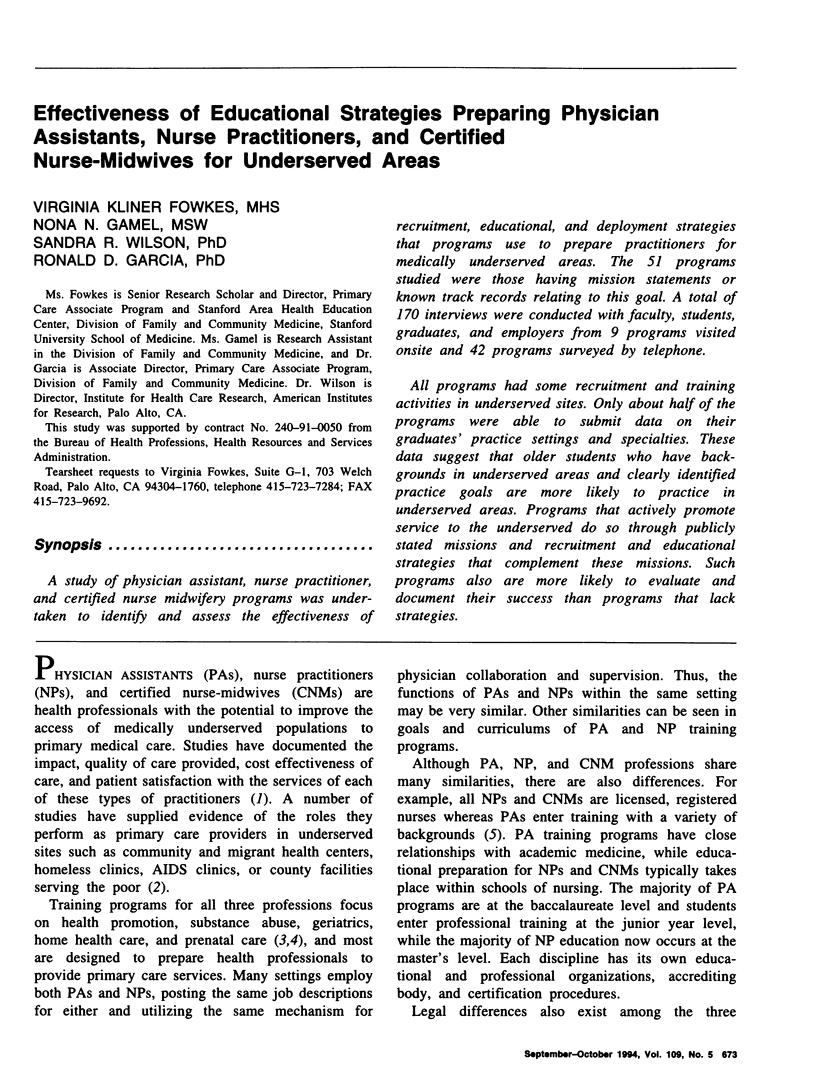
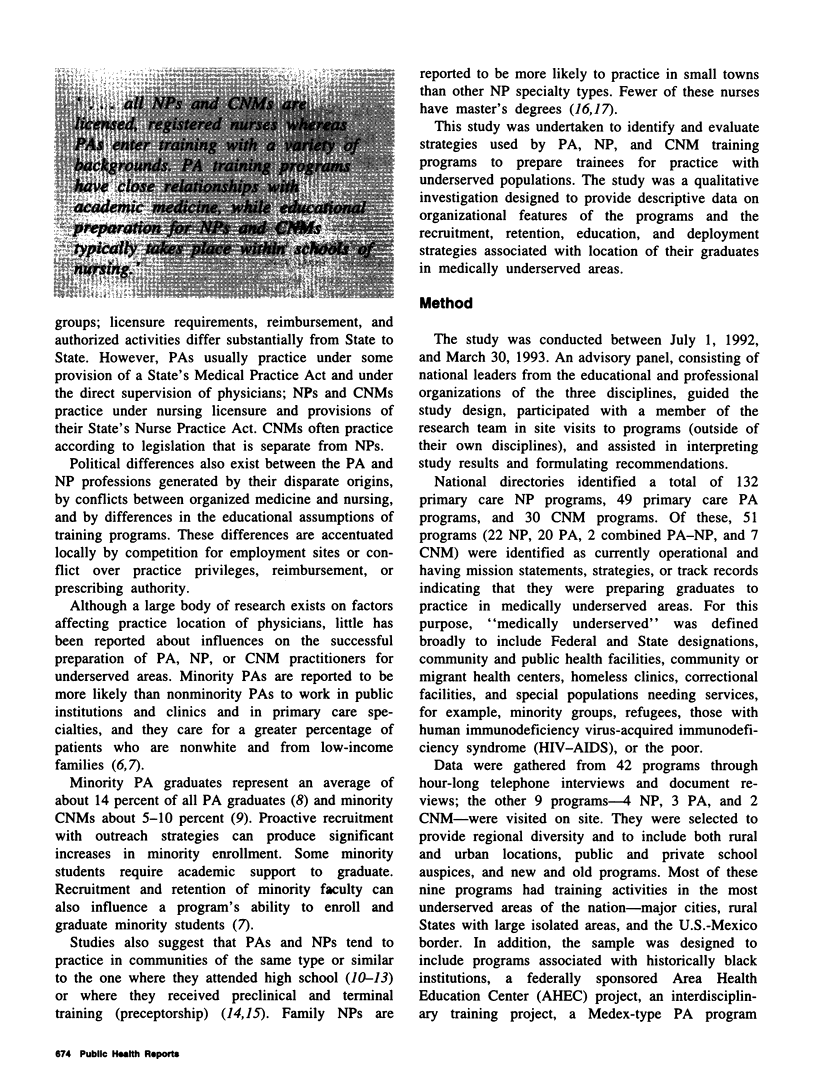
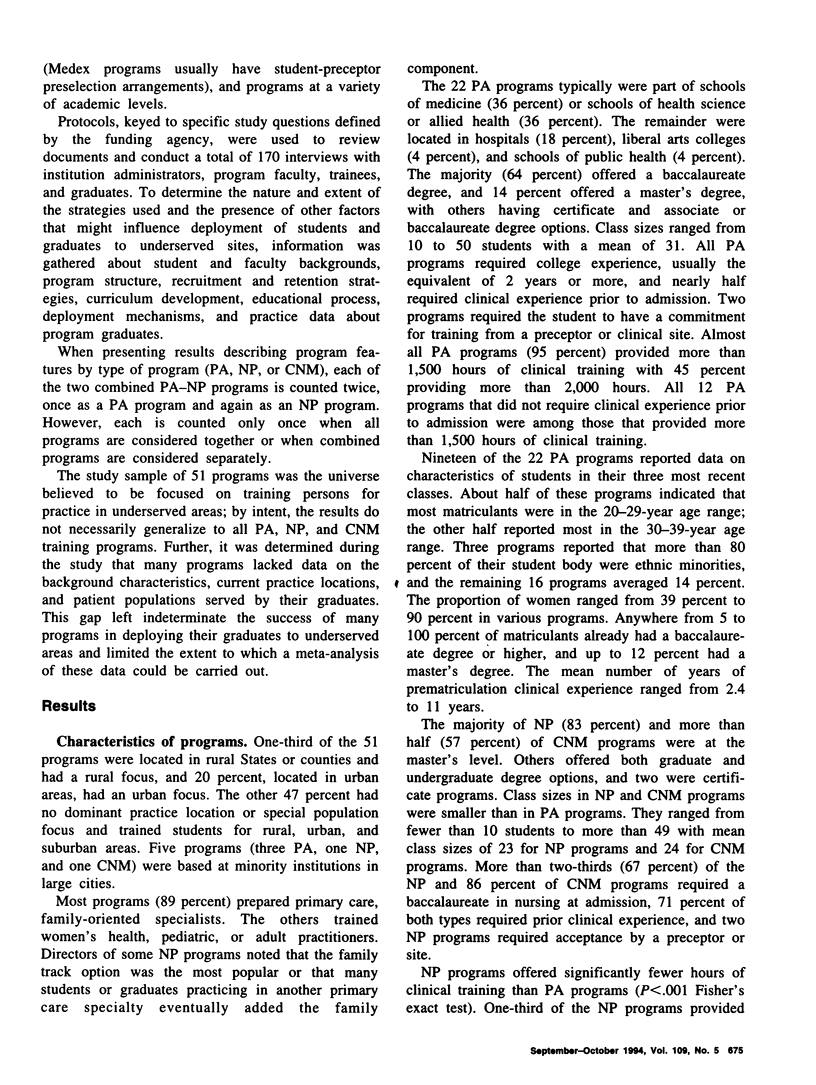
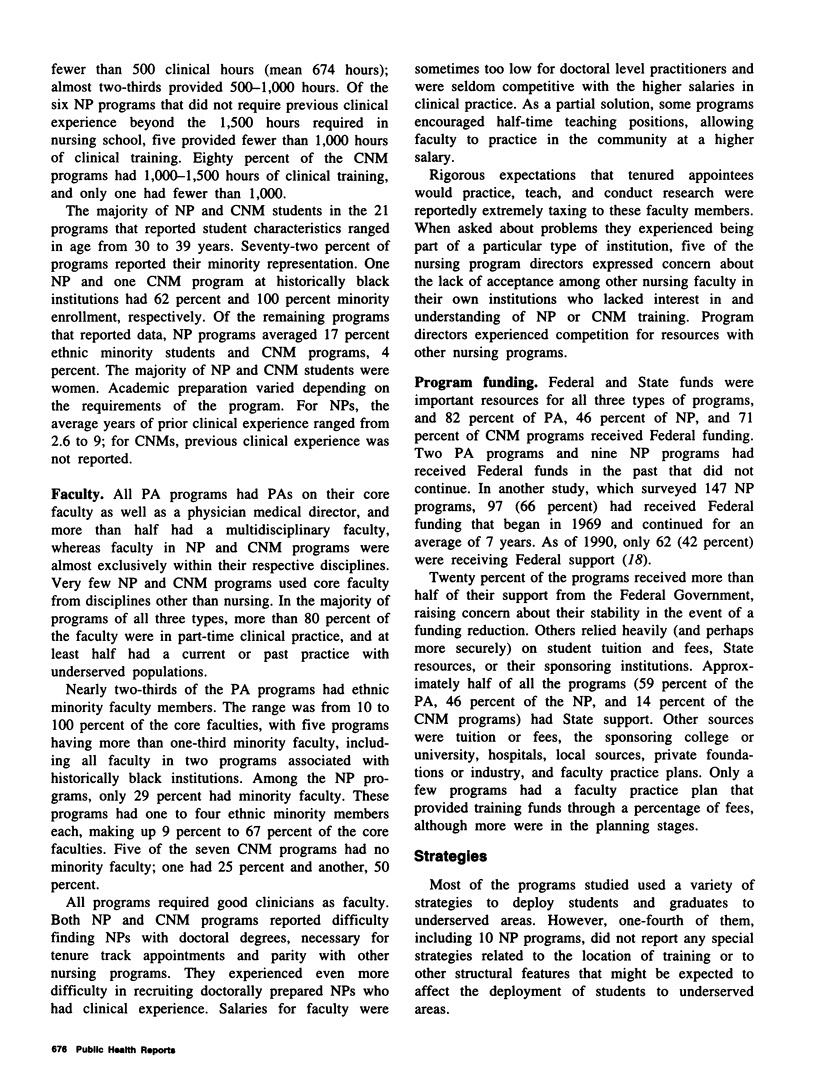
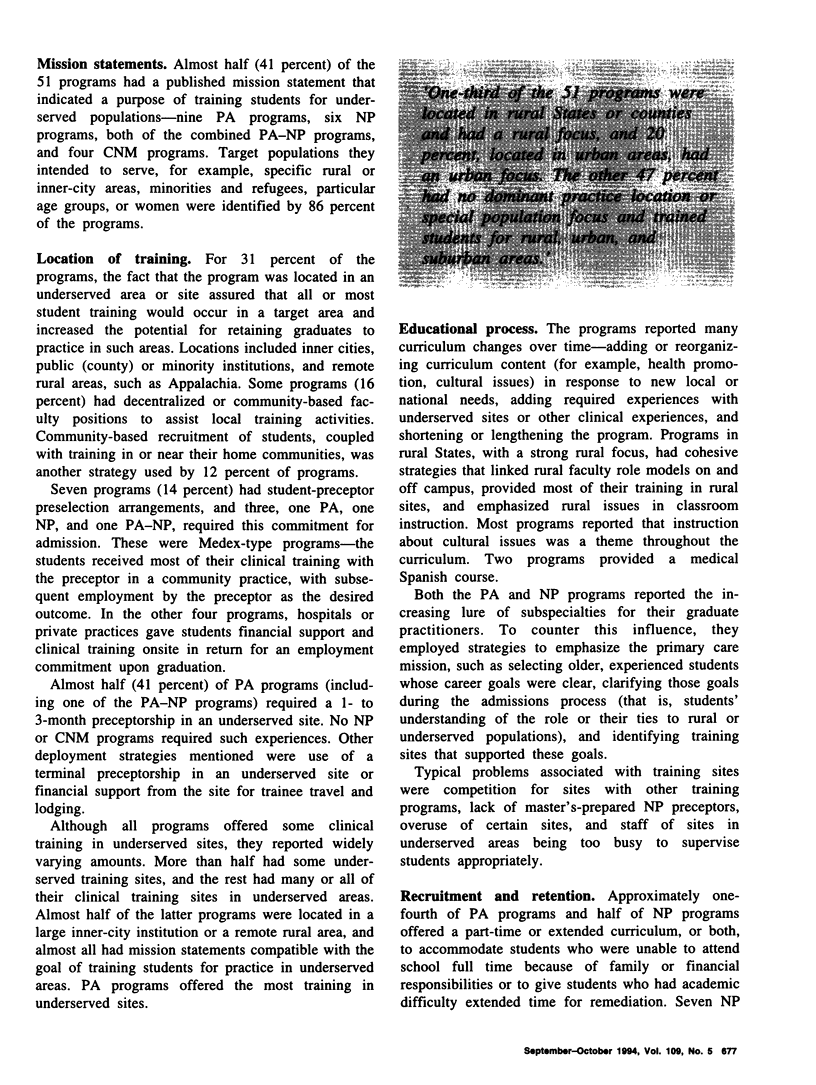
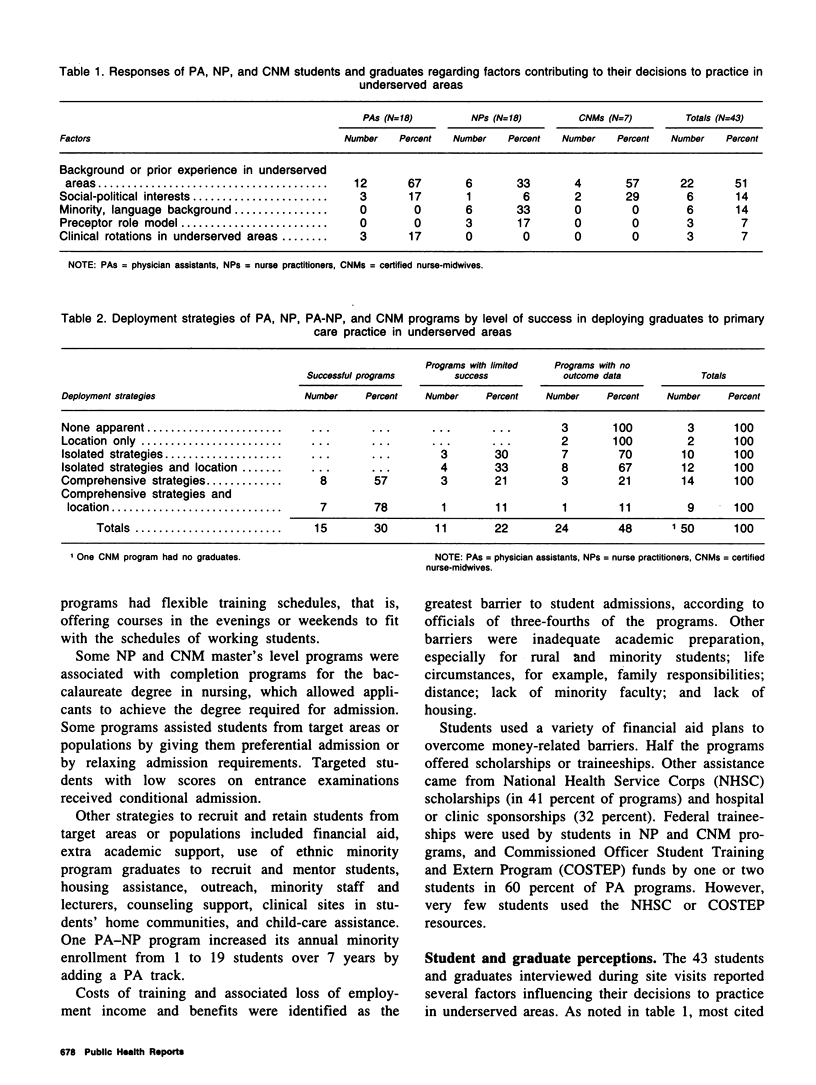

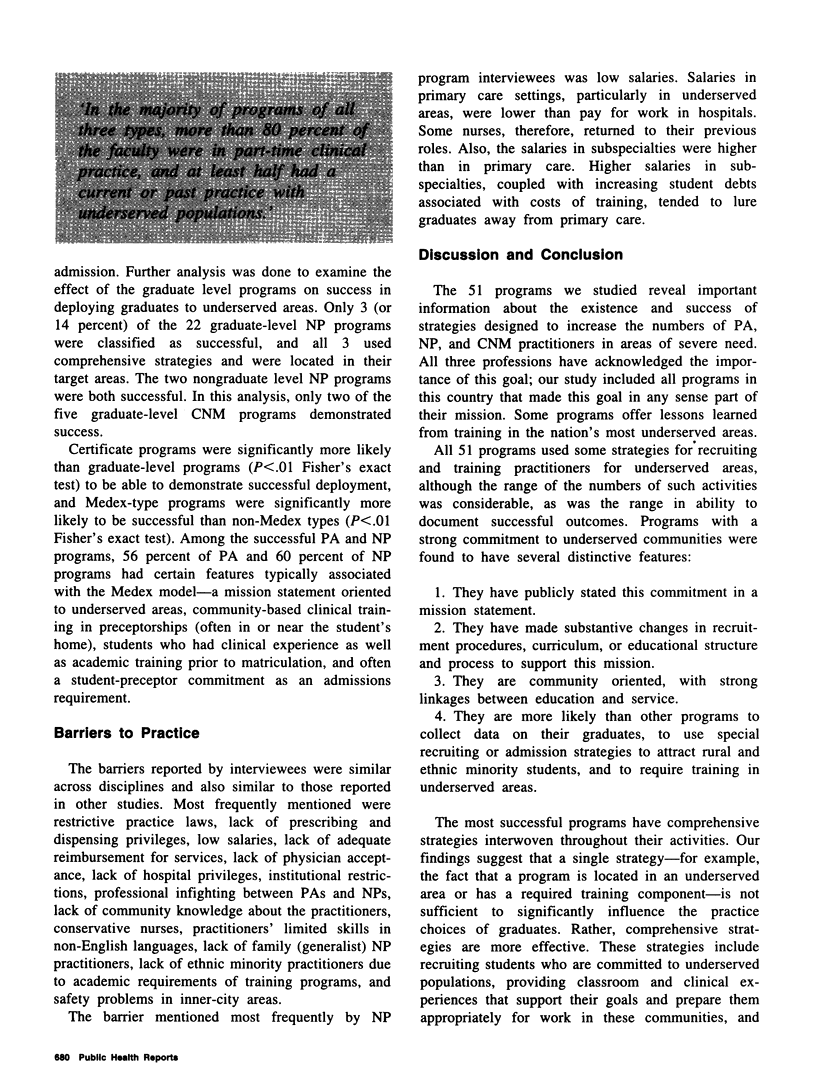
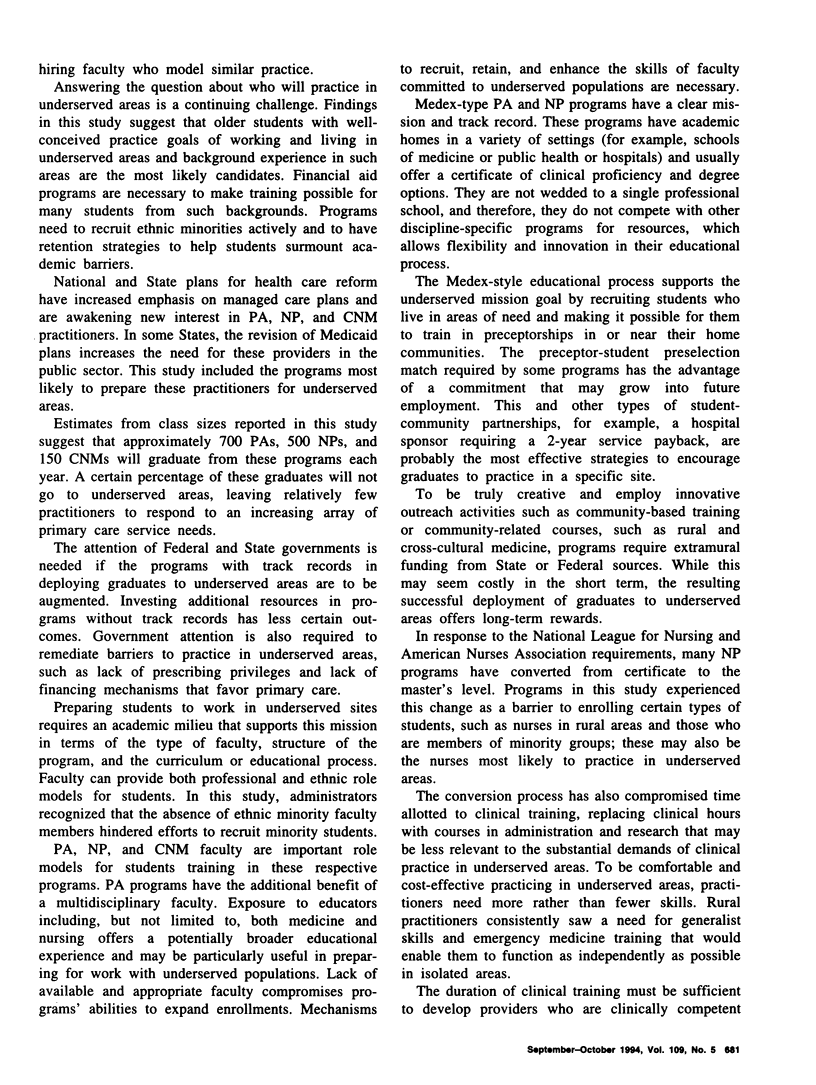
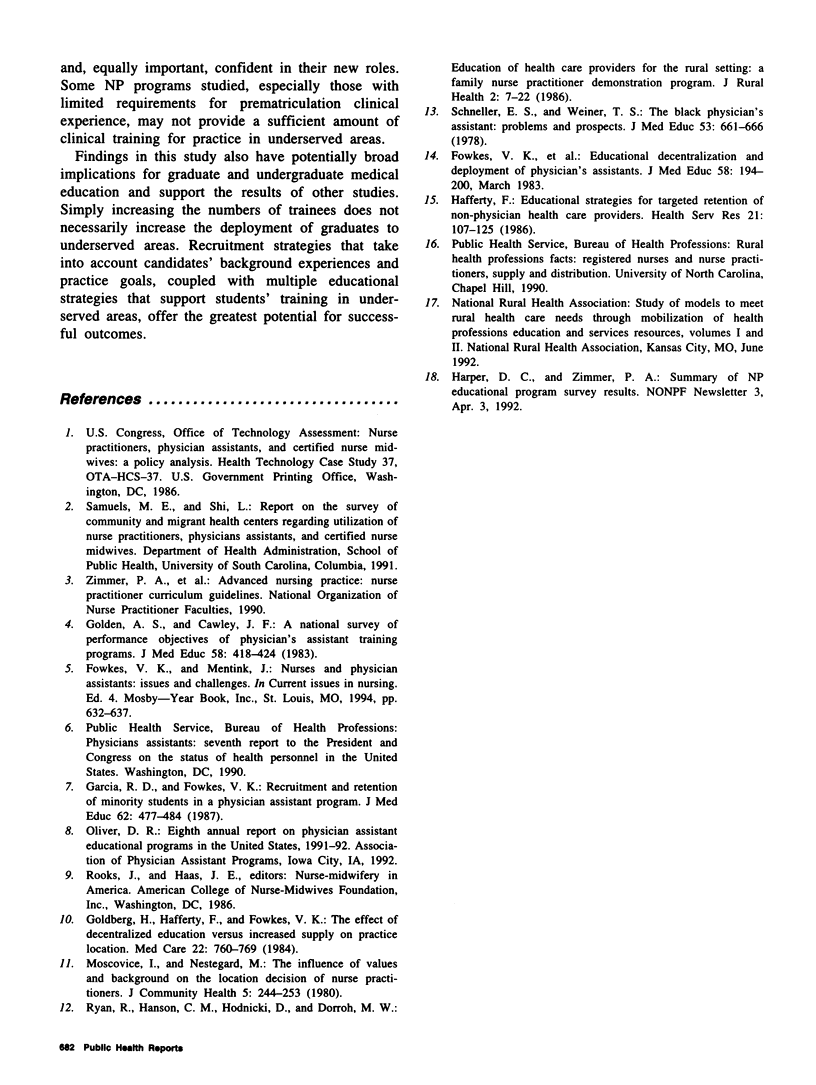
Selected References
These references are in PubMed. This may not be the complete list of references from this article.
- Fowkes V. K., Hafferty F. W., Goldberg H. I., Garcia R. D. Educational decentralization and deployment of physician's assistants. J Med Educ. 1983 Mar;58(3):194–200. doi: 10.1097/00001888-198303000-00005. [DOI] [PubMed] [Google Scholar]
- Garcia R. D., Fowkes V. K. Recruitment and retention of minority students in a physician assistant program. J Med Educ. 1987 Jun;62(6):477–484. doi: 10.1097/00001888-198706000-00004. [DOI] [PubMed] [Google Scholar]
- Goldberg H., Hafferty F., Fowkes V. K. The effect of decentralized education versus increased supply on practice location. Experience with physician assistants and nurse practitioners in California, 1972-1982. Med Care. 1984 Aug;22(8):760–769. doi: 10.1097/00005650-198408000-00008. [DOI] [PubMed] [Google Scholar]
- Golden A. S., Cawley J. F. A national survey of performance objectives of physician's assistant training programs. J Med Educ. 1983 May;58(5):418–424. doi: 10.1097/00001888-198305000-00008. [DOI] [PubMed] [Google Scholar]
- Hafferty F. W., Goldberg H. I. Educational strategies for targeted retention of nonphysician health care providers. Health Serv Res. 1986 Apr;21(1):107–125. [PMC free article] [PubMed] [Google Scholar]
- Moscovice I., Nestegard M. The influence of values and background on the location decision of nurse practitioners. J Community Health. 1980 Summer;5(4):244–253. doi: 10.1007/BF01324193. [DOI] [PubMed] [Google Scholar]
- Ryan R., Hanson C. M., Hodnicki D., Dorroh M. W. Education of health care providers for the rural setting: a family nurse practitioner demonstration program. J Rural Health. 1986 Jan;2(1):7–22. doi: 10.1111/j.1748-0361.1986.tb00132.x. [DOI] [PubMed] [Google Scholar]
- Schneller E. S., Weiner T. S. The black physician's assistant: problems and prospects. J Med Educ. 1978 Aug;53(8):661–666. [PubMed] [Google Scholar]


